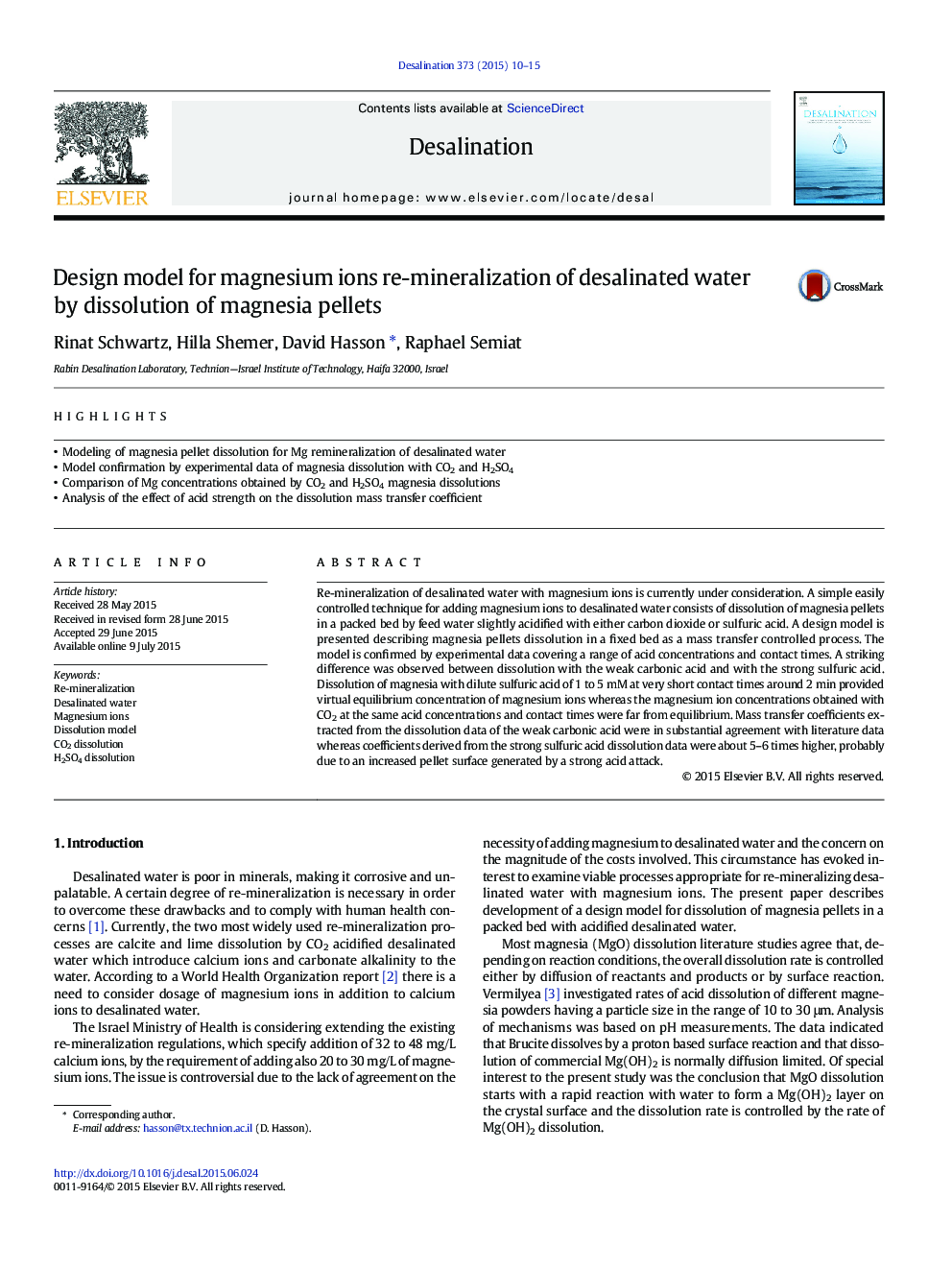| Article ID | Journal | Published Year | Pages | File Type |
|---|---|---|---|---|
| 623043 | Desalination | 2015 | 6 Pages |
•Modeling of magnesia pellet dissolution for Mg remineralization of desalinated water•Model confirmation by experimental data of magnesia dissolution with CO2 and H2SO4•Comparison of Mg concentrations obtained by CO2 and H2SO4 magnesia dissolutions•Analysis of the effect of acid strength on the dissolution mass transfer coefficient
Re-mineralization of desalinated water with magnesium ions is currently under consideration. A simple easily controlled technique for adding magnesium ions to desalinated water consists of dissolution of magnesia pellets in a packed bed by feed water slightly acidified with either carbon dioxide or sulfuric acid. A design model is presented describing magnesia pellets dissolution in a fixed bed as a mass transfer controlled process. The model is confirmed by experimental data covering a range of acid concentrations and contact times. A striking difference was observed between dissolution with the weak carbonic acid and with the strong sulfuric acid. Dissolution of magnesia with dilute sulfuric acid of 1 to 5 mM at very short contact times around 2 min provided virtual equilibrium concentration of magnesium ions whereas the magnesium ion concentrations obtained with CO2 at the same acid concentrations and contact times were far from equilibrium. Mass transfer coefficients extracted from the dissolution data of the weak carbonic acid were in substantial agreement with literature data whereas coefficients derived from the strong sulfuric acid dissolution data were about 5–6 times higher, probably due to an increased pellet surface generated by a strong acid attack.
